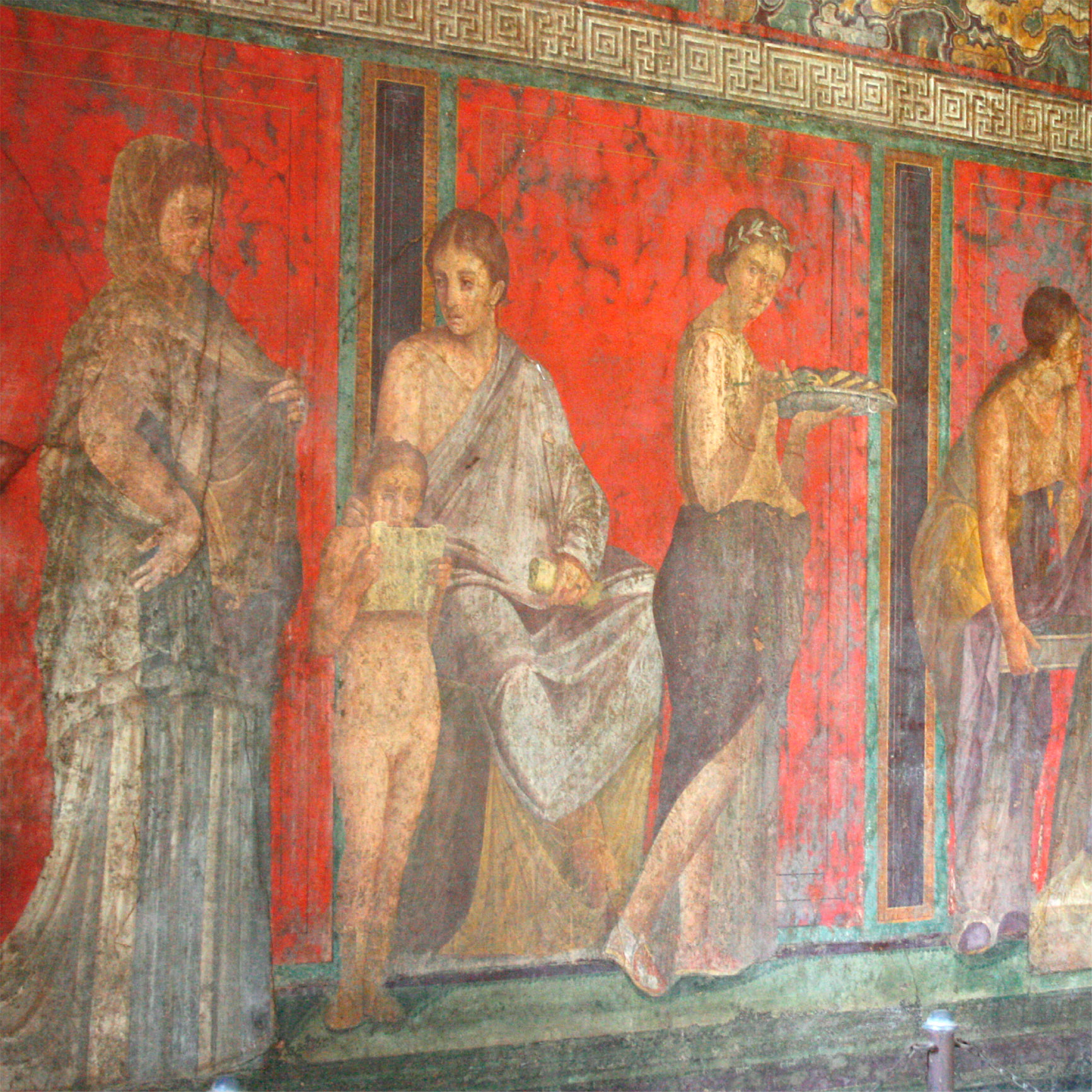
t Ruins of Pompeii against the backdrop of Mount Vesuvius
When Vesuvius erupted in AD 79 the port of Pompeii and its 20,000 inhabitants were frozen in time, perfectly preserved by the volcano’s ashes. The city has transfixed visitors since it was discovered in the 18th century.
Today, haunting plaster casts of Pompeii’s inhabitants lie sprawled where they died, while exquisite mosaics and wall paintings – among the ruins of shops, homes and temples – offer total immersion into the Roman world.
Pompeii contains the remains of many large houses of great historical and architectural value. Highlights include the House of the Tragic Poet, with its cave canem (“beware of the dog”) mosaic at the entrance, and the Villa of the Mysteries, with a fresco cycle showing an adolescent girl preparing for an initiation rite.
The Forum was the centre of public life. Set around it were important administrative and religious institutions, including the Basilica and the temples of Apollo, Jupiter and Vespasian.
Perhaps the most impressive ruins in the forum are its public baths. Built after 80 BC, the baths would have been widely used for daily ablutions. They follow a sequence from dressing room to frigidarium (cold room), then on to tepidarium (warm room) and calidarium (hot room). Mythological figures decorate the vaults of the tepidarium, and the calidarium contains a mammoth marble basin.
Performance spaces included the Odeon (a small theatre for 1,500 people), the Great Theatre (which held 5,000 people) and the Amphitheatre (for up to 20,000 spectators of gladitorial combat). Beautifully preserved, the Great Theatre is still used for modern productions in the summer months.
Numerous lupanare (brothels) have been discovered during excavation work. The most striking is on a street parallel to Via Stabiana. Here, erotic frescoes and ancient graffiti line the walls, indicating the services offered by prostitutes, including boys, to satisfy their clients and lovers.

t Ruins of Pompeii against the backdrop of Mount Vesuvius
Experience Campania

t Vibrant frescoes decorating the walls of the Villa of the Mysteries
Nearly 2,000 years after the eruption that destroyed Pompeii and Herculaneum, Vesuvius remains the most dangerous volcano in Europe, with an estimated 700,000 people living in the danger zone. Consequently the volcano, which last erupted in 1944, is constantly monitored. When it explodes again, scientists fear an eruption will put Naples in danger. If signs of activity increase to a potentially dangerous level, a 72hour evacuation programme will be implemented.
To experience the volcano closeup take a minibus from Ercolano Scavi train station to the Mount Vesuvius car park, from where it’s a halfhour climb to the steaming crater. For more volcanic experiences, head to the Solfatara, 30 minutes’ drive west of Naples, where you can have the unforgettably bizarre experience of walking on the hot, spongy, stinking fields of sulphur in another volcanic crater.